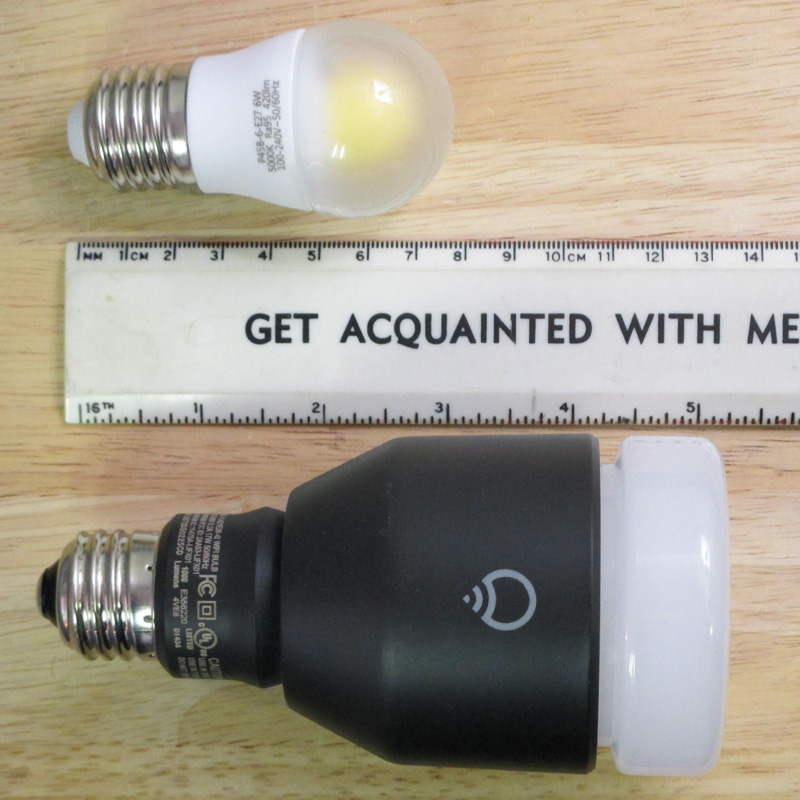State of the Light Bulb
I like light bulbs that have a high CRI (≥90) and a high color temperature (≥5000K). Unfortunately, very few LED bulbs meet both of these criteria. There are plenty of LED bulbs with a high color temperature, but they have a low CRI. (Or, frustratingly, don’t state their CRI, which I can only assume means they are embarrassed by the number.)
Then there’s the Cree TW, which, like Mary Poppins, is practically perfect in every way. As long as you want the color temperature of incandescent bulbs, that is. If you prefer your light to look like sunlight, you’re out of luck.
The only two products I’ve found that meet both of my criteria simultaneously are the Yuji bulb (top) and the LIFX bulb (bottom). (Technically, the CRI of the LIFX bulb is 89, but that’s close enough to 90 for me.) These two bulbs are at opposite ends of the scale, literally: the Yuji bulb is tiny and fits in any fixture. The LIFX bulb is large, heavy, and fits in… not so many fixtures.
There are two problems with the Yuji bulb. One is that it has fairly low light output: 420 lumens, close to a 40-watt incandescent. So, to get a decent amount of light, you have to buy a lot of them. (I’ve bought 24 so far.) Which brings up the second issue: supply problems. They are periodically out of stock in Yuji’s web store. So, if you want some now, you might be out of luck.
The LIFX bulb is plenty bright (1000 lumens, close to a 75-watt incandescent) and although I’ve only bought two so far, I haven’t run into any supply issues. And that’s not even counting the LIFX’s biggest feature: it can be controlled over WiFi, and can take on just about any color.
Unfortunately, after the 2.0 firmware debacle, I’d been using my LIFX bulb as a “dumb bulb”, on a wall switch, since March. However, about a month ago, I noticed that LIFX had put up a new developer site, and for the first time was documenting their protocol, so I decided to give the LIFX bulbs another shot as a “smart bulb.” (If I can write my own software to speak the LIFX protocol, it doesn’t matter that their official app is buggy and frustrating.)
Anyway, I’m now working on writing a Haskell library that speaks the LIFX LAN protocol, and a command-line Haskell program that uses the library. I’ve got the basics working, and I’m now working on making it a bit more polished, while trying to avoid succumbing to too much feature creep.
